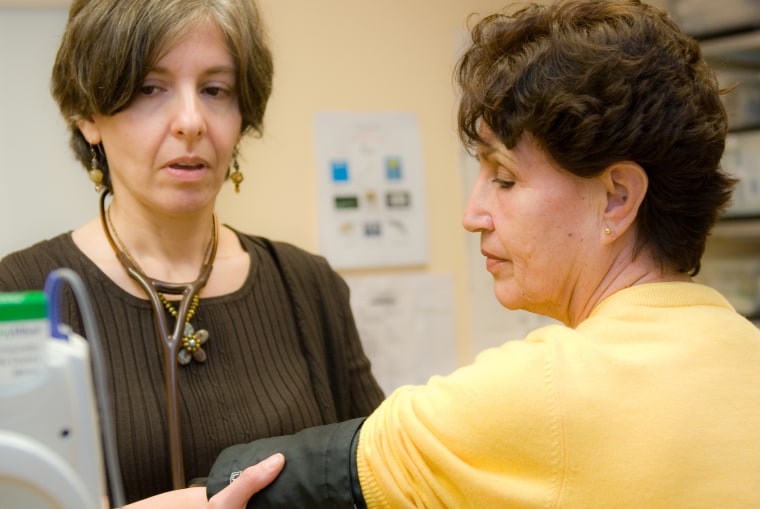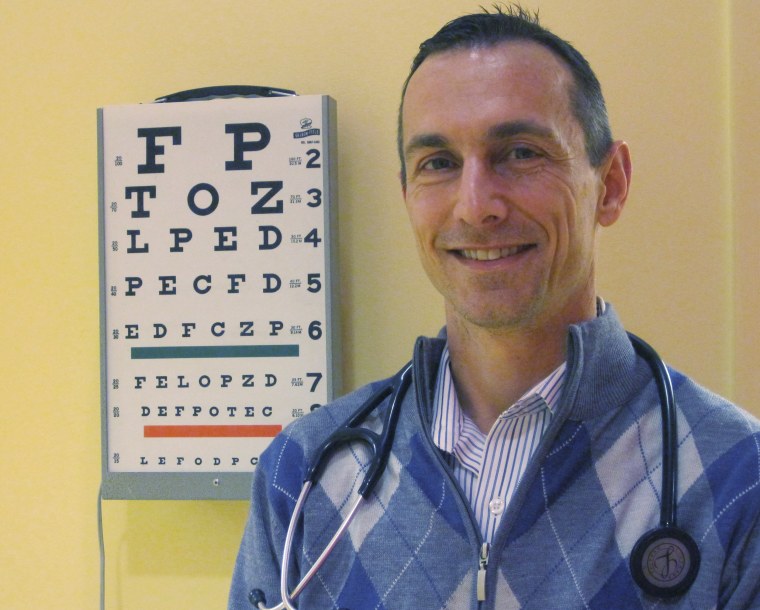In a nondescript office building in suburban Washington, D.C. that is filled with medical offices, La Clínica del Pueblo is setting up shop to serve a burgeoning Latino population that lives near this building, but rarely can get care here.
The building is in Prince George's County, Maryland, a county that borders the southeastern end of the nation's capital, where working-class Latinos have flocked as home prices in Washington, D.C. have become unaffordable. Thanks to its hyper-frenzied real estate market, the median home price in Washington, D.C. is half a million, compared to $237,500 in Prince George's County.
But as more and more Latinos move to Prince George's County, a number of organizations that serve lower income people have followed, including La Clínica, which has been based in Washington, D.C. since the 1980s.
“It makes sense for us to be out there to better serve them closer to home." --Alicia Wells, La Clínica del Pueblo executive director.
Come early December, La Clínica will open a new primary care center in the county, setting it up in the building that is near several bus lines that serve the county's fast-growing Latino community. The center is being paid for with a $1.25 million grant La Clínica received, money earmarked in the Affordable Care Act, the health insurance law many know as Obamacare, for providing health services to those in most need of them.
“We were noticing that more and more of our clients were coming in from PG County. It’s just more affordable to live there, and it’s become an immigrant haven,” says La Clínica’s Executive Director Alicia Wilson. “It makes sense for us to be out there to better serve them closer to home. It’s about being able to provide choices for our patients.”
Prince George's County is home to the third-largest Hispanic community in the Washington capital region, but has more people living in poverty than any other Washington suburb and a higher percentage of uninsured residents – 20 percent – compared to neighboring counties and Washington, D.C., the lowest in the region at 9 percent.

The uninsured rate among Hispanics in Prince George’s County is about 40 to 42 percent, according to Census surveys. More than a third of Hispanic county residents have reported that they can’t afford to see a physician. Even if they could financially, there are fewer primary care physicians in PG County compared to the surrounding counties.
Discussion of demographic change regarding PG County and Washington, D.C. often revolves around the migration of higher-income African American community to the neighboring county. But today, Latinos make up more than 16 percent of PG County's population, more than doubling in the past 10 years and the county is the top destination for those moving from the district and other area suburbs.
RELATED: Texas Groups Push To Enroll Latinos Before Obamacare Deadline
Following those Latinos have been many service organizations, such as La Clínica.
“While we have served Prince George’s County residents for years, we know that they have serious service gaps in their neighborhoods and the demand continues to grow,” Wilson said. “We are thrilled to receive this funding, which will allow La Clínica to increase its impact on the health status of Latinos in Prince George’s County and start to fill some of the gaps.”
La Clínica’s clients who live in the county are also thrilled with the prospect of a new facility close by.
“I am so happy to hear that La Clinica is going to Maryland. I was a patient at another clinic in Maryland before, but it didn’t work well for me because no one spoke Spanish there,” says María M., an immigrant from El Salvador who asked that her last name not be used. She currently visits La Clínica’s facility in downtown Washington, D.C., and is looking forward to not having to make that trek to the nation’s capital. “I live near the new facility, so it will be great to receive the services I need in Spanish and closer to my home,” she says in Spanish.
While the surrounding suburbs are more affluent and better able to provide healthcare services, the opposite is true in Prince George’s County. Fewer insured residents and higher poverty levels within the county’s Latino community means a significant unmet need, Wilson said, adding that few healthcare centers in the county provide the language and cultural competency to reach the region’s Hispanic community.
“Many Latinos have chronic illnesses they are neglecting because they don’t have access either to a physician or the means to pay for it," said Dr. Ricardo Fernández, La Clínica's chief medical officer.
One significant unmet need La Clínica hopes to address by being in the county is to help those who are not eligible for coverage under Obamacare: the undocumented population.

According to the latest U.S. Census figures, 20 percent of the county’s residents are foreign born, with 61 percent of that population saying they are not U.S. citizens, which means they either are legal permanent residents or in the country illegally. The majority – 58 percent – came from Latin America and Spanish is their primary language.
“Communication with patients is critical. The more they feel they can communicate, the more they reveal,” said Fernández, who started at La Clínica twenty years ago as a volunteer doctor while a medical resident at George Washington University Hospital in downtown Washington, D.C. A native of Milwaukee, Wisconsin, Fernández’s family is originally from Puerto Rico, and he says he wanted to work in the Latino community as a way to give back and help fellow Hispanics. “We (La Clínica) provide the community with a medical home.”
La Clínica provides services regardless of immigration status and language ability.
“The number of uninsured Latinos is high because they’re not eligible under Obamacare, and many feel linguistically isolated. We are working hard to meet that need,” said Wilson.
Their target population includes legal residents who are not eligible for Medicaid, the federal healthcare insurance for low-income residents.
Low-income legal immigrants have to wait five years after receiving their “green card” before being eligible to apply for Medicaid. That means five years on top of the number of years they wait to become legal residents. “The safety net just isn’t there for them sometimes for many years, and that is another significant unmet need.”
RELATED: Latinos Get Insured by Obamacare In Large Numbers
La Clínica’s new offices in the Riverdale neighborhood of Prince George’s County will initially provide services to 1,300 residents, but Wilson said that’s just the beginning of their expectation to be a major presence in the county.
“We’re starting out small and modest and getting our foot in the door," she said, "and letting the community guide us in our growth.”